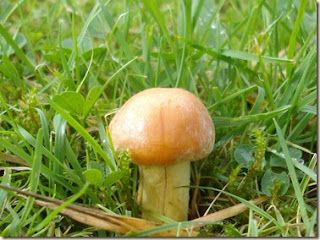As they tend to, the latest storm has moved on elsewhere for the moment and as I write, the air has calmed down just a little back in Scotland.
We know this because even whilst away the Internet gives us access to the Campbeltown webcam which has survived the big storm to give us this lovely shot of the Christmas lights coming on behind the harbour. Unlike a few days ago when the surface of Campbeltown Loch was being picked up and thrown about by the wind, rain spotting the camera lens, now twinkling lights are being reflected off the water and the boats are looking snug and safe.
Meanwhile, in Worthing we gaze at the sunset from the window of our Tony’s flat, not a million miles from Kintyre but a rather different skyline to the one we are used to, the one which often has eagles glaring at us from the skies above who I often imagine to be drooling at the sight of prey they see far beneath them.
Worthing has a large population of very large gulls which soar overhead then swoop down on chip-wrapper leavings before settling on the rooftops at night. There is also a large elderly population here, not that dissimilar from Carradale really, but here they must be generally less mobile as so many of them are rampaging around the streets in their electric wheelchairs, bouncing up and down the kerbs and risking life and limb crossing busy streets. There are so many of these contrivances that a booming sale and repair market has spring up, bringing new life to the business community. I can’t make out whether it is just my imagination but it seems that a rider’s grim face always appears along with the whining sound of a mobility scooter. Perhaps one should not underestimate the degree of coordination required to pilot one of these chariots, steered as they are via the smallest of joysticks and for an elderly person not brought up on the wonders of Playstation or the Xbox, guiding this machine around pedestrianized streets must represent a significant challenge. So the serious face may be nothing more than concentration, with a touch of blind panic thrown in. I do wonder, however, whether the faces might also be reflecting our disapproval, as if we, the able-bodied, make the rider feel they are doing something antisocial, as if we are saying “You are a menace to us all on that thing!” or “Surely you’re fit enough to be walking!” Perhaps it is just that society hasn’t quite made the adjustment to accept this relatively new form of transport as a part of our lives. Perhaps the first person to ride on a horse also had a grim set to their features that were misinterpreted by those around them.
From Tony’s place we move on to Ticehurst to visit my mother, herself of a venerable age but as yet not having succumbed to the mobility scooter. She has always been a good walker, striding along towing others in her wake, and few people in her own age group have ever been able to keep up with her. Approaching ninety now she complains at her failing faculties but she still wants to get out and about in the countryside whenever she can. It frustrates her that she cannot do this as often as she likes and wintry weather in particular cramps her style. She has made the right choice in living in the most benign corner of the country, weather-wise, a place where rainfall generally comes in fitful sprinkles or sometimes not at all and wind barely ruffles the hair.
Or so we thought…
Yet another of those bizarre Met Office overlaid maps with their threatening amoeba-like blobs of colour tells the story of wind and rain for the next few days. It seems we just cannot escape, no matter where we go. We now need to time our journey home so as to slide between the yellow growths as they shuffle across the country, not an easy thing to achieve. Somewhere in the past, before the advent of amoeba-covered charts, we would have set off blindly and got home safely without the stress that comes from worrying about where the predicted rainstorm is going to strike or when the forecast wind will carry us away. Are we really better off today with the help of all this information?
In the end our journey home proved far more acceptable than the forecast led us to expect. Some rain showers did find us and there was some wind but somehow we managed to avoid anything really nasty. Back here in Scotland the landscape has changed in our absence but our house has survived whatever has been thrown at it whilst we were away. Only the windows bear testament to the storm, spattered as they are with a salty residue, a little bit of Atlantic Ocean transported across Kintyre, no doubt.
We have barely recovered from our journey but can’t wait to get out and about so we can see what effect the onset of winter has had. There are white tops on all the summits now and with ice on the path up Deer Hill, some care is needed.
Whilst tradition dictates that we bring a tree inside the house at this time of year, it wasn’t difficult to find a suitable one outside for this picture… and the halo on top came free. So we wish all our readers a very Merry Christmas and best wishes for 2012.
And regards from Ailsa too.










































